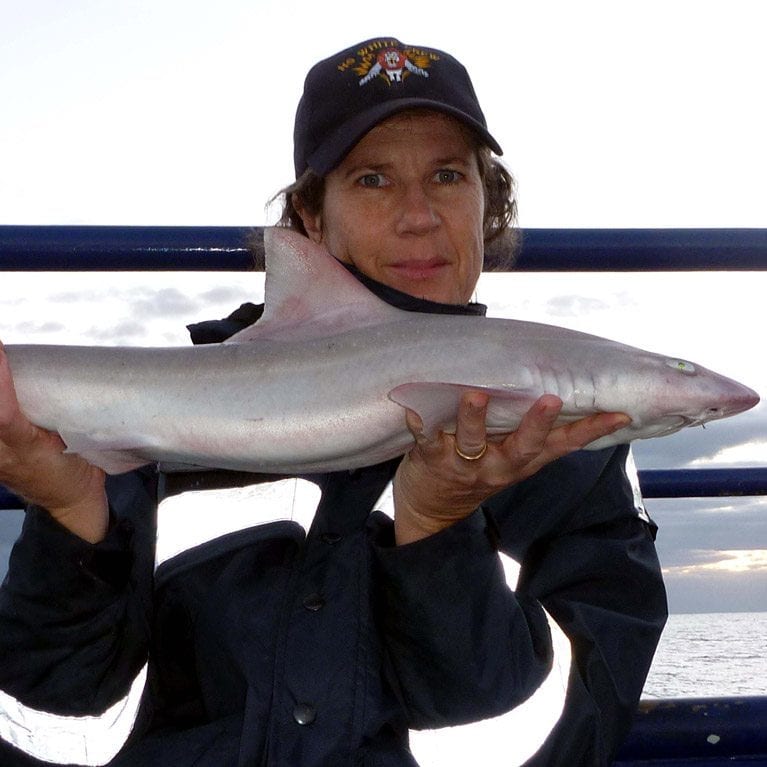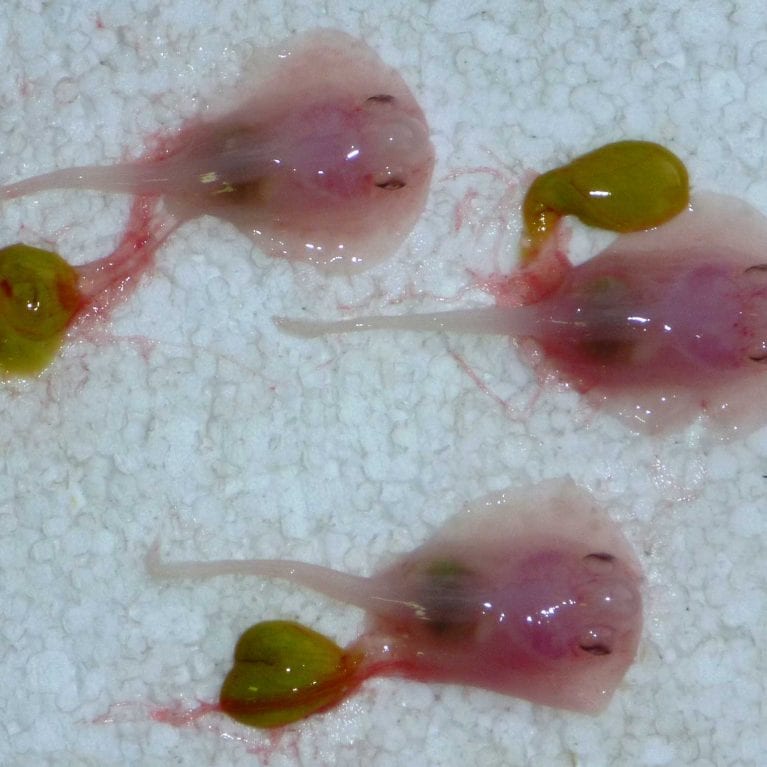Great Barrier Reef’s sharks of the deep
Australia’s Great Barrier Reef is famous for its coral reef systems, but 1/3 of the reserve consists of largely unknown deep water habitat. These areas are increasingly being fished and deep dwelling sharks and rays are often caught as bycatch. Sam uses stable isotope analysis to better understand these vulnerable species and the threats they face.
Looking back at my life, it now seems to have been inevitable that one day I would study sharks. I was raised in Atlantic Canada, where one’s life – social, economic and political – is defined by the ocean. Since I was a child my happy place has always been in the water. I also developed a soft spot for species that most people found frightening or unattractive. It seemed so unfair that cute and cuddly species got all the attention! It’s no wonder that at 16 years old I marched home and announced that one day I would study...



The diet and ecological role of deepwater sharks in Australia revealed using stable isotope analysis
The aim of this project is to assess the diet, movement, and community interactions of poorly understood deepwater sharks, skates, and rays off the eastern Australian coast using stable isotope analysis. This study will contribute to a better understanding of deepwater ecosystem function and help to manage vulnerable shark species.
In order to feed global demand for seafood, over the last 50 years large scale fisheries have significantly expanded into deep water environments. A wide variety of deepwater sharks, skates, and rays are taken as by-catch in these fisheries and subjected to high fishing mortality. The problem is deepwater sharks are poorly understood as little information is available on their ecology and biology. Without this information, it is impossible to determine the effect fisheries are having on deepwater shark populations, or develop appropriate conservation measures. Therefore, it is critically important that we develop a better understanding of deep water shark ecology in order to create efficient management programs and increase public awareness. This information needs to be collected as soon as possible before fisheries expand further. This information will allow for a precautionary and proactive approach to management that will prevent population decline before it begins.
Sharks are critical to marine ecosystem health. They exert top–down control on prey population size and behaviour, and help to transport energy between marine systems (Heithaus et al. 2012). As a result, the diet and movement of shark populations directly influences the structure and biodiversity of marine habitats. Without healthy shark populations, marine environments will radically change and become significantly less diverse (Ferretti et al. 2010). Unfortunately, shark populations are in a state of global decline due to negative human influences, including pollution, fishing, and climate change (Dulvy et al. 2014). Deepwater sharks are one of most vulnerable shark groups. This is because they grow slowly and have very few offspring (Rigby et al. in press). As a result they are highly sensitive to overfishing. As global demand for seafood increases, commercial fisheries will continue to expand operations into poorly understood deepwater ecosystems (Morato et al. 2006). A wide variety of deepwater sharks are taken as by-catch in these fisheries, and it is unclear if these species can surive high levels of fishing induced mortality (Oliver et al. 2015). More information on the ecology of deepwater sharks is required to determine if these fisheries are sustainable and develop successful management strategies. Deepwater species are difficult to study because they are highly isolated and rare. Stable isotope analysis (SIA) is one of the most efficent ways to investigate the temporal and spatial variation in the diet and movement patterns of rare species. This technique uses chemcial analysis of tissue to determine what prey shark’s eat,where shark’s eats, and if shark diet changes depending on environmental or biological conditions (Shiffman et al. 2012). SIA can also reveal if species move between locations. Therefore this technique can provide excellent, long-term data on deepwater sharks.
- I will define the trophic level and diet range of each shark population identified in this study. This will help measure the direct predatory influence of each species and determine if species are highly specialised at a population or individual level.
- I will determine the degree of dietary similarity among species. This will indicate the degree of competition for resources between populations and the presence of resource partitioning.
- I will determine if sex, size, or time of year, effects the diet of shark species. This information will help determine how diet changes within a population and what factors are most important to defining the diet of each species.
- I will determine if deepwater sharks move between distinct deep water habitats. This will help determine how deepwater sharks use space relative to fishing areas.
- I will determine how long it takes for the isotopic diet signature of a mother shark to “grow out” of new born sharks. This will greatly increase the accuracy of SIA for deepwater sharks around the world.

